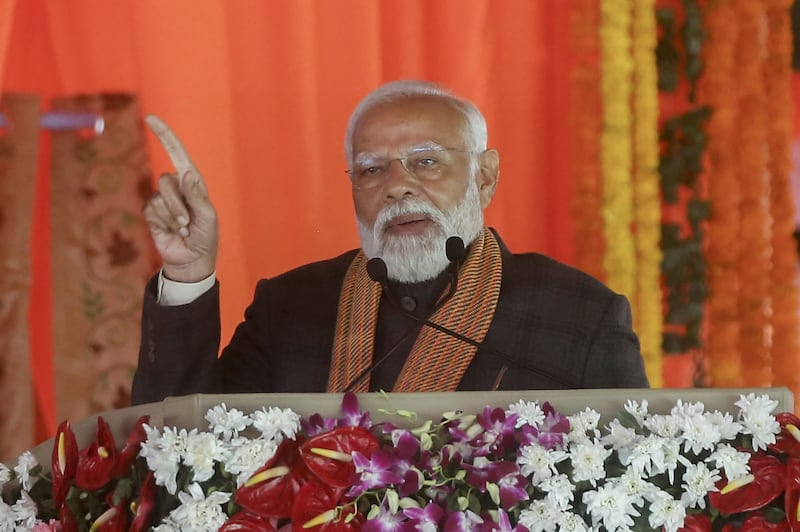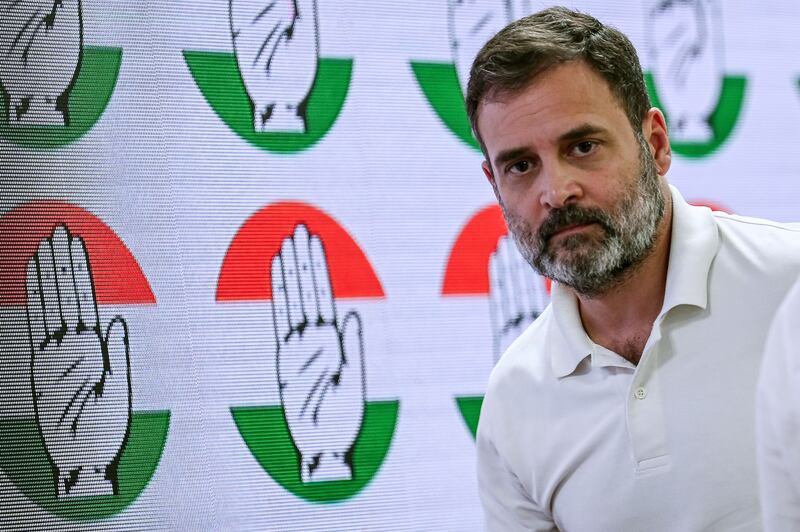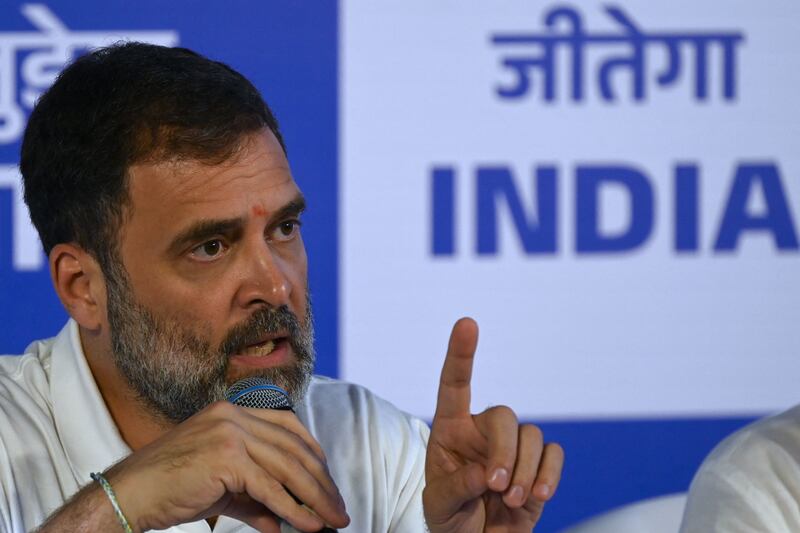Rahul Gandhi – scion of the Indian National Congress, perpetual political underdog and opposition hope for reclaiming national leadership – is taking his political message straight to the public with a dramatic ploy: a 6,700km trek through 15 states.
Gandhi embarked in January on his Bharat Jodo Nyay Yatra (Unite India for Justice March), starting in the conflict-torn eastern state of Manipur and due to finish in mid-March in western Mumbai. The journey, undertaken just months before an expected general election, is intended to lift the fortunes of an opposition front widely seen as a waning force.
The trek is Gandhi’s second – last year, he completed a more than 4,000km south-to-north walk from Kerala to Kashmir, drawing large crowds with off-the-cuff speeches that lamented India’s increasing divisions under prime minister Narendra Modi.
This year, Gandhi’s message is focused resolutely on the economy. While Modi has lauded India as the world’s fastest-growing large economy, Gandhi has dwelled on the grievances of farmers, lower-caste Indians, small business owners and unemployed youth who feel left behind by the ruling Bharatiya Janata Party’s (BJP) brand of muscular Hindu nationalism.
READ MORE
He has also hammered the BJP on issues where the opposition sees the governing party as vulnerable, such as its close ties to billionaires who have profited from India’s growth, among them Gautam Adani and Mukesh Ambani.

“Three to 4 per cent of the population has taken control of the entire wealth and power structure,” Gandhi told a roadside crowd as he passed through the town of Shajapur in central Madhya Pradesh state this week. “Adani and Ambani are the ones sitting at the top who have control of it,” he added.
Congress party officials insist the trek is not a campaign event. But they acknowledge it is one of their best hopes of connecting directly with voters in an increasingly BJP-dominated public square. The ruling party is much better funded and has a commanding presence on both conventional and social media.
Gandhi, the fourth-generation dynast of the family behind Congress, has been mobbed by supporters and welcomed by roadside banners featuring him, his mother Sonia Gandhi and other party figures. After suffering knee problems on last year’s walk – and with a tight schedule before the general election, which is expected in April and May – he now travels in a red jeep.
Along the way, he has highlighted the limited career choices available to young Indians, whom he said faced obstacles including caste discrimination in the military and government bureaucracy, scarce credit for small businesses, and cutbacks in military recruitment.
“How many people from backward or lower castes are there in management positions?” Gandhi said. Congress has vowed to make apprenticeships a legal right for young people in its draft election manifesto and for a caste census to fully account for the majority of Indians who come from lower or “backward” castes or tribal groups.

The limited available polling data points to a strong BJP election lead. But Congress officials believe marginalised voters could help tip the vote in their favour, including in India’s populous and poorer north where Modi’s party is strongest, and where the opposition is trying to chip away at the narrative that prime minister is undefeatable.
However, Congress faces punishing odds against the BJP, which has strong backing from business, a strong grassroots network and a powerful identity as the protector of Hinduism.
Congress lost seats to the BJP in elections in 2014 and 2019 and has suffered mass defections to the governing party. The BJP is now aiming to win with its allies a “supermajority” of 400 out of 543 seats in the lower house of parliament.
Gandhi himself has been an easy target for Modi, who has derided him as the entitled heir of a party that was swept from power in part because of rife corruption.
Jairam Ramesh, a Congress MP who joined Gandhi on the trek this week, draws encouragement from the 2004 election, when Congress, then led by Sonia Gandhi, defeated the BJP. “It’s very challenging because we’re out-funded,” Ramesh said. “But anyone who writes the epitaph of the Congress party now is forgetting history.”

In Ujjain, a Hindu pilgrimage site, Gandhi visited the Mahakaleshwar temple and bemoaned to a large crowd the “social, political and economic injustice” meted out to disadvantaged Indians.
At an overnight camp, Gandhi sat in a circle with chartered accountants as part of Congress’s outreach to professional groups who largely back the BJP, taking questions on taxation, small business and Modi’s “demonetisation” drive in 2016. Demonetisation – which saw the prime minister withdraw 500 and 1,000 rupee banknotes from circulation overnight – was billed as targeting black money, but triggered financial turmoil.
“The goal of demonetisation was to cripple small and medium-size enterprises, disturb their cash flow, so he [Modi] could reshape the Indian economy and make it based on a couple of monopolies,” Gandhi told the group. “And I think he was quite successful in that.”
Some observers see Gandhi’s trek as a metaphor for the grim slog that the opposition faces under a system increasingly dominated by a single party. Unlike the BJP, which draws strength from the cadres of the world’s largest political party, Congress’s fortunes are driven almost entirely by the personas of its leaders, especially the Nehru-Gandhi dynasty that produced three generations of prime ministers.
Congress’s current president Mallikarjun Kharge is seen as a wily politician but firmly beholden to the Gandhis, who still wield considerable power behind the scenes.
“Kharge is an appointment of the family,” said Sugata Srinivasaraju, author of a book about Gandhi, who stepped back as Congress leader after its last defeat in national elections in 2019. “If the party is to stay united, the family is seen as having to serve as the glue.”
Ramesh, the MP, insisted Congress had a chance of a comeback. “People are very concerned, people are fed-up,” he said. “Our challenge is to make sure that these people, the silent majority, that a good portion of them come back to Congress.”
– Copyright The Financial Times Limited 2024
- Listen to our Inside Politics Podcast for the latest analysis and chat
- Sign up for push alerts and have the best news, analysis and comment delivered directly to your phone
- Find The Irish Times on WhatsApp and stay up to date












